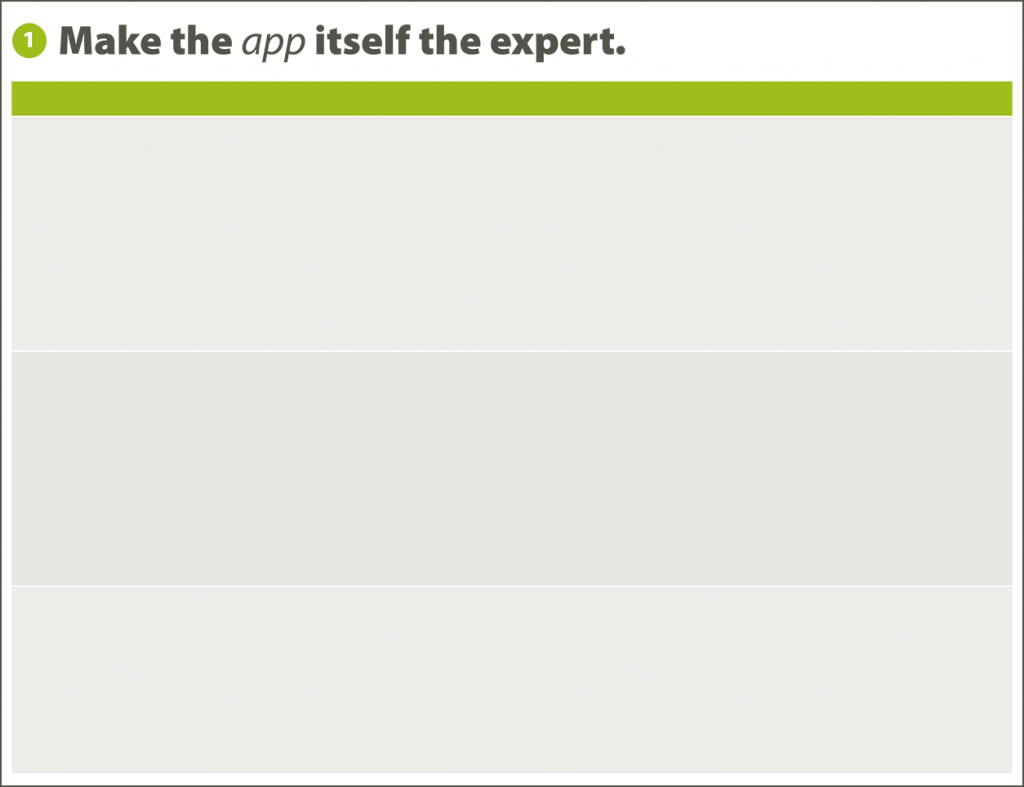The Fundamental Anatomy of Digital Product Goals
5 min read
If you want to make outstanding digital products, you must understand your users deeply. Their needs, tasks, and behavior drive interactive experiences, from features and functionality to design and content. But of course, every product starts with an idea. And ideas are developed by organizations with goals and motivations.
Toward Goal Nirvana
Most companies are pretty good at identifying internal goals. The trouble is, after ascending this particular Olympus, they go no further. Digital product goals are decidedly incomplete (and powerless) on their own. They must:
- Have a clear context.
- Be prioritized.
- Connect to real users.
- Predict a successful future state.
- Be concretely measurable.
The Essential Parts
If you simply list goals in a vacuum (which organizations do all the time) and expect them to come to fruition, you are wishing, nothing more. Successful digital products are well planned.
Context
When our firm takes on a discovery engagement, the end result is a document we call a User Experience Road Map. It includes essential UX thought power like user research, data analysis, and high-level requirements. It also distills internal goals and gives
them practical significance. This significance comes from their connection to the concepts in the road map. Apart from this broader strategy, the internal goals are meaningless.

Prioritization
Goals are big things. They are high-level statements, connected to business strategy, that point to desired outcomes. Digital products can have as few as 3 main goals or as many as 7. If you get beyond this, it’s probably time to reorganize your goals – are they high-level and mission-critical? Can some be combined?
Rank goals and separate them into two camps, user-centered and internal. Both are strategically important, but user-centered goals always get top priority. The most important user-centered goal (goal number 1) should be something you simply can’t do without. If you did not reach this goal, your digital product would utterly fail.

User-Connected Objectives
Goals must be accompanied by specific objectives, actionable steps you take that help you to achieve the goal. When it comes to digital products, objectives are best if they have a direct connection to users. This is why in our User Experience Road Maps, we cover user research early in the document.
Goals and objectives only make sense in light of what we understand about users. We keep things simple by identifying roughly three key objectives per goal. These should be concise and specific. A CEO should readily understand them.

Predictions
How would you know you’ve achieved something? Imagine you’ve accomplished an objective. You should expect certain things to occur. Describe this future state. For example, if you remove unnecessary technical jargon from an app, you might expect fewer errors, less user frustration, and reduced support burden. We call these product “wins.” The folks at Google Research developed the idea and call them “signals.” For more, look into the HEART framework.
You have moved deliberately from a high-level, strategic goal down to specific objectives, and now know clearly what will happen if those objectives are met. This method is simple but powerful, because it puts you in a position to take the final, indispensable step.

How to Measure
To know you’ve truly achieved a goal, you must show evidence. Evidence comes from empirical measurement of clear, specific metrics (e.g. revenue, profit margin, cost savings, efficiency, etc). Most development teams are not spending time here, and it shows.
Consider our example: If you remove confusing technical jargon from your app, we expect to see certain results. How do you measure those results? Let’s give it a try.
Fewer User Errors
- Metric– Error & Failure Rates
- Measurement – User testing results before and after content changes.
Less User Frustration
- Metric – User Satisfaction
- Measurement – User surveys showing changing user satisfaction over time.
Reduced Support Burden
- Metric – Call Center Volume and Quality of Requests
- Measurement – Number of calls for help with the product before and after changes.
This is a simple example, but it illustrates the ease and effectiveness of this approach. Because you have taken the time to thoughtfully describe a set of positive end states, you are more able to measure them. And measurement yields real numbers, which translate into real dollars. You’ll find out if your expectations were on target and you will establish a baseline to compare against moving forward.

Putting it Together
Adopt this approach to setting digital product goals and you’ll form a direct line connecting strategy and real-world use to measurable results. By defining success methodically, you will drive product development in the right direction. But your newfound influence won’t stop there.
Ever had trouble getting stakeholder and decision-maker buy-in? These folks speak the language of strategic goals and the practical bottom-line. Now you speak it as well. Go through this process with them. You will be astounded by the difference it makes.





